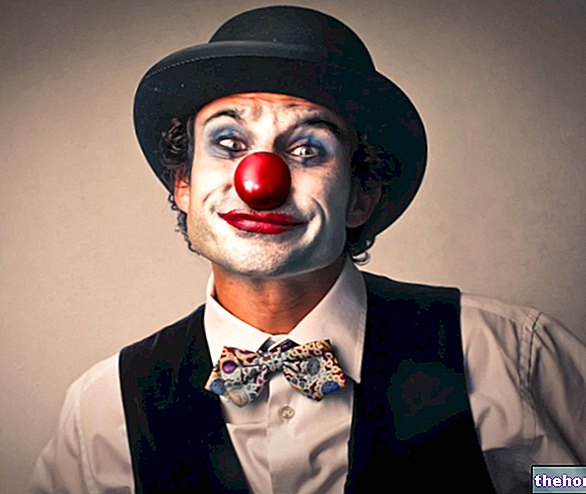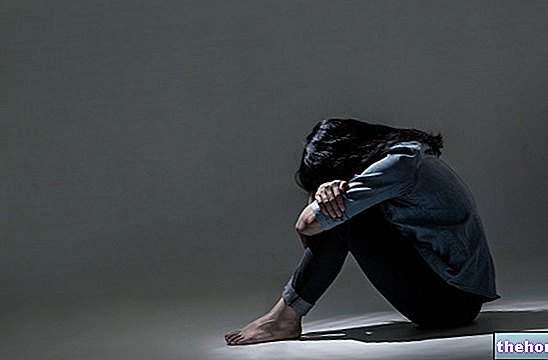Generality
Dysmorphophobia is a mental pathology, characterized by the obsessive and often baseless concern that a particular part of the body (eg the nose) is the bearer of an "imperfection so evident that it has to be hidden in any way.

Those suffering from dysmorphophobia adopt very particular behaviors, such as: hiding the alleged body defect with every possible strategy, feeling anxious in the midst of other people for fear that the latter may notice the alleged physical defect, contact the cosmetic surgeon to plan a possible intervention to correct the alleged imperfection, etc.
The diagnosis of dysmorphophobia is based on medical and psychological evaluations, on the clinical history and on the comparison between the picture of the compartments of the presumed patient and the diagnostic criteria reported by the DSM-5, in the chapter dedicated to dysmorphophobia.
Typically, treatment consists of cognitive-behavioral psychotherapy, associated with the administration of serotonin reuptake inhibitor drugs.
What is dysmorphophobia?
Dysmorphophobia, or body dysmorphic disorder, is a mental illness characterized by the preoccupation - obsessive and often unfounded - that one or more aspects of the body are markedly imperfect and in need of being hidden or modified with every countermeasure, even the most extreme.
In other words, those who suffer from dysmorphophobia believe they have a serious physical defect and, as a result, develop an obsession that leads them to resort to every remedy to hide the presumed imperfection of the body.
CLASSIFICATION ACCORDING TO DSM-5
Premise: the Diagnostic and Statistical Manual of Mental Disorders (DSM) is a collection of all the peculiar characteristics of known psychic and mental illnesses, including the respective criteria required for diagnosis.
According to the DSM-5 (latest edition), dysmorphophobia is a mental illness which is rightfully included among obsessive-compulsive disorders. In fact, like a classic obsessive-compulsive disorder, it induces the patient to continually repeat certain gestures, as if they were rituals that cannot be renounced.
EPIDEMIOLOGY
Dysmorphophobia is a fairly common mental illness, affecting more people than estimated (ie 2.4% of the general population).
Both men and women suffer from dysmorphophobia, in equal measure; very often, this condition arises as early as adolescence.
Dysmorphophobia is very common among people with a history of depression or social phobia, among people with obsessive compulsive disorder or generalized anxiety disorder, and among people with anorexia nervosa or bulimia (eating disorders).
Causes
Psychiatrists and psychologists believe that, like many mental illnesses, dysmorphophobia also arises as a result of a combination of factors of a different nature, including: genetic factors, psychological factors, social factors, cultural factors and factors related to development.
According to some interesting researches, dysmorphophobia would be more common in the presence of:
- Introversion;
- Tendency to perfectionism;
- Negative vision of one's own aesthetic image;
- Increased aesthetic sensitivity;
- Childhood abuse and / or neglect.
Symptoms, signs and complications
The symptoms of dysmorphophobia consist of very particular anomalous behaviors.
The "list of typical behaviors of an individual with dysmorphophobia includes:
- Constantly compare your physical appearance with that of other people;
- Observe yourself in the mirror for many hours a day or avoid mirrors categorically;
- Spending a lot of time of the day - especially when in the company of other people - hiding what is believed to be a physical defect;
- Feeling anxious in the midst of other people, for fear that the latter will notice the presumed physical defect;
- Avoid crowded places, participation in social situations or events etc .;
- Appealing to cosmetic surgery, to remedy that "anatomical aspect that is a source of discomfort and worry. Often, the use of the cosmetic surgeon is useless, in the sense that even after the" retouching "the obsessive worry persists;
- Feeling a strong sense of discomfort when an individual makes observations on the anatomical tract deemed imperfect;
- Undergo restrictive diets and exercise incessantly.
Dysmorphophobia is a source of obsessive torments, often unsubstantiated, which seriously compromise the quality of daily life, work activity, interpersonal relationships and the sociability of the affected individual.
WHICH TRAITS OF THE BODY ARE THE MOST CONCERNING WORRIES?
In patients with dysmorphophobia, the perception of the anatomical defect can concern any point of the human body. However, some anatomical sites, such as the nose, abdomen, thighs, skin, and hair, tend to worry more often than others.



















-nelle-carni-di-maiale.jpg)








